The author wishes to thank Class of 2024 members (pictured from left to right with the author in the center) Miracle Johnsons, Gabe Rabold, Alex Hussar, and Jayden Yon for their assistance in writing this blog.
In the fall of 2022, the calculus first-period class was beginning as usual – a friendly dialogue between students and teacher, preparing for the pledges to the Bible and flags, and getting ready for the opening thoughts of the day.
This particular class coined a name for each day of the week with the goal of thinking deeply about something each morning – Mull-It-Over Monday, Talk-About-It Tuesday, Witty Wednesday, Thoughtful Thursday, and Fink (think)-About-It Friday. As the teacher, I embrace the opportunity to lead my students in entertaining a portion of Scripture, a robust thought, or an interesting quote to start. One morning comes to my mind frequently and has prompted me to share this incredible dialogue from our discussion with you, the reader. I find that this conversation has transformed my understanding of calculus, general mathematics, and the majesty and transcendence of God.
Planes, Points, and Curves Represent Reality
On this particular morning, we had begun our review of calculus principles from the previous year and had begun to discuss the properties and characteristics of different graphs. Here is a very shortened version of what we were analyzing. I hope that I will make you feel like a calculus novice by the end of this if you are not already a mathematician.
You see, there are different sets of data and equations that we deal with in calculus. This information can be translated and represented graphically on an x-y coordinate plane. Points are plotted, curves are drawn and connected, and we have a visual representation of reality. The appearances of most curves will either move in the upward direction,
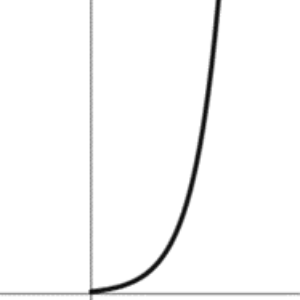
the downward direction,
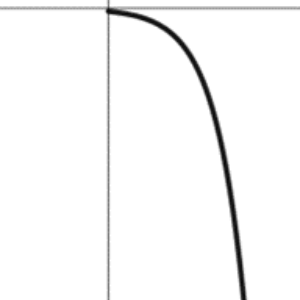
or there will be distinct sections of both upward and downward movement.

If the latter is true about the look of a curve on a graph, there will be at least one point on the graph where there is a transition from one direction to the other, either upward to downward or downward to upward.
When the curve transitions from upward to downward, we have reached the top of a mountain.
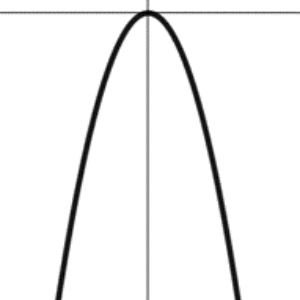
When the curve transitions from downward to upward, we have reached the bottom of a valley.
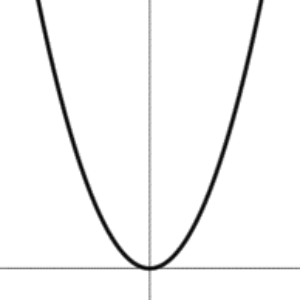
If we look at the top of a mountain or the bottom of a valley, a horizontal line can be drawn to touch only that one point.
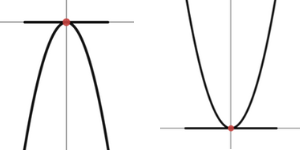
The horizontal line is neither increasing nor decreasing; there is no “slope” – the “slope” of that horizontal line is flat or zero. This is a point of transition, a point that is critical to the graph.
However, there are some graphs where there is no definitive transition point. The graph instantaneously transitions from upward to downward or downward to upward. It is pointy or sharp, and it is an infinitely small point. We call this a corner. A corner is where two curves or lines, one increasing and one decreasing, meet.
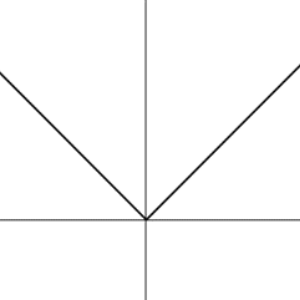
Deep Learning Results in Life Application
A student of mine, Alex, decided to pose a question that made me consider much more than ever before the wonderful subject of calculus. He asked, “Do corners exist in real life?” “Well, of course they exist,” I immediately thought to myself. Alex suggested that if we zoom in at an infinitely small level, we would always find a point where the corner does not exist and that there would be a curve, or a point of transition, from decreasing to increasing or increasing to decreasing. Why? Because it is impossible to draw a perfect corner. Even if we were not limited by human error and used technological software instead, we would still be limited by the constraints of the software, since computers cannot measure things infinitely small and eventually will reach a limit. Therefore, it is impossible for mankind to create a real corner in the physical or digital world. Humans cannot create perfect corners because of earthly limitations. God, however, being outside of those physical and digital restrictions, is capable of creating corners. The most beautiful corner is seen in God’s story of salvation that comes through faith in Christ Jesus.
The Only True Corner Comes Through Christ
We know through reading the Scriptures that it is “by grace you have been saved through faith; and that not of yourselves, it is the gift of God” (Eph. 2:8, NASB1995). We know that salvation is only possible because of the grace Jesus Christ freely gives us because of the Father (Acts 5:31). We also read about many miracles Jesus carried out in the Gospels and Acts, where immediate healing was brought upon those requesting it by faith (Matt. 8:1-4, 8:14-15; Acts 14:8-10). This is a clear demonstration of the immediacy of salvation that is given to a person when they repent, acknowledge what Jesus did for them on the cross, and receive forgiveness of their sins (Acts 16:31, Rom. 6:14) and freedom from condemnation (Rom. 8:1). One moment, the individual is destined to spend eternity in Hell away from God; in the next moment, because of God’s grace and mercy, that same individual is now destined to spend eternity with God forever in Heaven.
There is no middle ground. There is no in-between stage of being separated from God or being with God forever. Jesus tells us that “no one can serve two masters” (Matt. 6:24). In the same way, no one can be partially saved and partially condemned. We are either saved or condemned.
Thinking back to the mathematical example of the curve, if we graphed an individual’s salvation story, there would never be a point on the graph where the “slope” of the horizontal line touching the point is zero. It is an immediate change from death to life, from downward to upward. It is a corner! It is the only corner that I can think of that truly works in our world, and it is God who upends the laws of earthly limitations He created and displays His power and strength! It amazes me that one of the fundamental concepts of calculus (the corner) points to the omnipotence of God.
It is God who upends the laws of earthly limitations He created and displays His power and strength. The concept of the corner in calculus points to the omnipotence of God. Share on XSalvation does not delay. The power of the grace of God, once freely given by the Father, cannot be stopped. Life change is immediate! I am thankful that God offers salvation to us at the corner, and not at the top of a mountain or the bottom of a valley. His love, grace, and mercy prompt immediate change. So, the next time that you see a mountain or a valley, or a graph of any kind in a mathematics course, textbook, or drawing, be thankful that God changes lives in a moment, and that calculus points back to the Savior.
If you are looking for a Christian school in Lancaster, PA, that places God’s Word at the center of every subject (even Calculus!) please schedule a private tour or register to attend one of our Open Houses. If you would like more information about Dayspring Christian Academy or the Principle Approach, please call Karol Hasting at 717-285-2000.
References
Desmos, https://www.desmos.com/
Foundation Publications. (1995). New American Standard Bible.
Sullivan, Michael, and Kathleen Miranda. Calculus for the AP Course. 3rd ed., W. H. Freeman, 2020.

